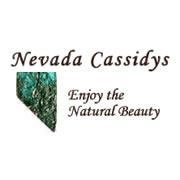Turquoise Information

From a common definition, turquoise is a hydrous phosphate of aluminum and copper, Al2(OH)3PO4 H2O+Cu. However, Stone Mountain Turquoise has very unique combinations of minerals that produce many various colors, shapes and sizes of turquoise. The rock formations in the area have been studied vigorously over the years, andesite-rhyolite, limonite, porphyry iron, hornblende quartz monzodiorite, argillaceous, and carbonate sedimentary rocks including evaporites on some mountain peaks are but a few.
These rock formations went through many different changes throughout pre-historic periods. Some were gradual and others abrupt and violent. Often times we find blended rock formations that appear to be burned, melted then pressured into to a crystalline structure. We also find formations that might be considered to be “mineral vugs”. We consistently find two types of turquoise, “turquoise nuggets” and “vein turquoise“.
There are a number of discoveries at Stone Mountain Mine that we have not been able to classify due to the wide ranging variety of mineralization in the area. We have been able to specify a few however namely, botryoidal turquoise and intrusive quartz turquoise.
Botryoidal turquoise typically runs within mud veins that are compacted into large cracks in the overall base rock.
Intrusive quartz turquoise is a more rare and we has been found since the early 1980’s when we first started the dig. This type of material runs quartz rich knobs of feldspar and rhyolite. This combination produces very hard turquoise and often displays visible quartz inclusions.
Translucent turquoise is the rarest type of turquoise discovered at Stone Mountain Mine so far, this type of turquoise was also first discovered in the early 1900’s and claimed by Godber. Some time had past and Godber abandoned his Yerington-area claims and moved on to central Nevada. The stones that were found are documented as 2-3mm slabs of semi-translucent vein material, mostly blue-green in color.
 A good majority of the turquoise found at Stone Mountain is “vein turquoise”. Thickness of the stones ranges from 1mm up to 30+mm in larger slabs. A fairly common dimension for vein turquoise from Stone Mountain: 25x30x3-4 mm. Adding that there are always a large amount of smaller vein pieces of varying size. |
 Near 20% of the stones found are turquoise nuggets. Turquoise nuggets form in pockets of softer hostrock and precipitate clays that sift into cracks and voids within the host rock outcropping in all parts of the claim. A common shape and size for our nugget turquoise is 29x20x6-10 mm. Smaller nuggets in a variety of sizes are scattered in a wider range. Some of the turquoise nuggets came from a narrow voids and so they are mostly flat in dimension but still retain a bumpy surface. We like to call these “vein nuggets”. |
 |
Translucent Turquoise:
In our opinion this is the finest grade material we have ever seen! The translucent turquoise is absolutely remarkable! In general in runs in thin veins of varying colors, a good majority of the translucent material is a beautiful Blue-Green color. Much of the translucent turquoise runs within cracks in vicinity of large bodies of quartz that are speckled throughout the deposit. There is always an exception and we sometimes find translucent material that is botroydial, has quartz matrix or even a block like shape. in 1987 a Gemology was performed by the late Allen E. Lombardo. He found that our midgrade material had varying translucence. This was an interesting discovery for us, and since that time we have discovered a larger variety of translucent material. Hold one of these slabs up to your standard desk lamp and you will see what we mean.


Reference Sources:
Turquoise Mineral Data
Area Mineral Findings
Mineral Vugs
Botryoidal Crystals
Sub-Botroydial
Plagioclase Feldspar
Porphyritic Quartz Monzodiorite
Intrusive & Extrusive Quartz
Allan E. Lombardo Gemology – Page 1 – Page 2 – Page 3
To see the type of turquoise used in this gemology click here

